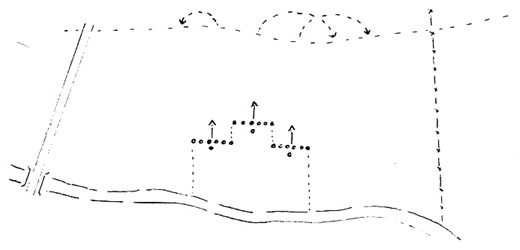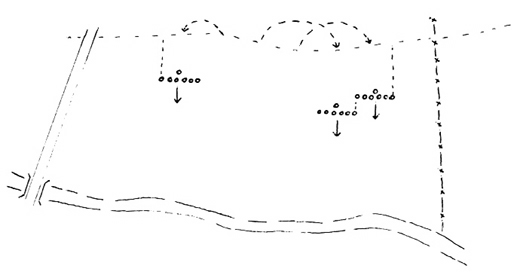SEARCH PROCEDURES
Any one may become lost in a wooded area, town, sea, or elsewhere. At some point in time, that person will be missed by friends, relatives, or other persons. The latter should ask for immediate help in finding the person who is lost. One knowledgeable individual should assume direction of the search. All members of the search party must be given the lost person’s plans, probable intentions, dress, description, and time and place of last known location. Searchers are organized as teams. Each team is equipped with proper clothing, field gear, transportation, communications systems, medical supplies, and a map and compass as required by the situation. The following specific tasks are then assigned to various teams and members of the search party:
1. Establish a confinement zone that will encompass the general area around the lost person’s last known location. Allow for time, distance, and topographical factors. Assign various searchers with the tasks of establishing roadblocks, trailblocks, lookouts, and patrols designed to keep the lost person from wondering outside the search area. A string line with tin cans filled with two small rocks each is useful in wooded areas. Day or night, the searchers can hear when a person or animal hits the string.
2. Initiate a detection procedure designed to discover anything within a confinement area that could lead to finding the lost person. Searchers should first travel obvious routes and check obvious locations. Tracking dogs might be used if appropriate. All searchers should observe for foot prints. Individual searchers should wipe out or mark their own tracks so that other searchers do not start tracking them. To avoid duplication of effort, search teams should each be given their own search blocks or grids within the confinement area. In a wilderness area, sucn teams should use brightly colored marker ribbons and pre-assigned compass headings. Search grids should overlap at least 50 yards to prevent gaps in the search effort. For a person lost at sea, a helicopter(s) will be needed to effectively conduct the search. Ships and boats can be used to establish the confinement area. When only one ship is available, it should travel in circles in the general search area.
3. Attempt to discover the lost persons personality traits. If the lost person does not easily panic, he or she may stay put until found. Or they might have enough common sense to mark their trail or travel in a circle looking for a familiar landmark. The small child lost in town or in a shopping center will usually cry so that other persons can discover that they are lost. An older child will eventually ask for help. An overboard sailor is generally going to float with the current, rather than risk exhaustion and drowning by attempting to swim after the ship. A person who does not panic is therefore easier to find. By contrast, searchers must look everywhere for one who panics at becoming lost. Those who know the lost person should be able to predict how the lost person might react to being lost.
4. Deploy search teams as indicated below.


Diagrams show A and B positions of a 3-team grid search using natural confinement area boundaries and assigned grids. Compass headings are used to control routes of movement, e.g. 320° up and 140° back.
5. Prepare an evacuation plan that assumes the lost person could be trapped or injured. Use rescue techniques previously discussed under the Trapped section. Treat for any injuries using suggested First Aid practices. In serious cases, use a litter evacuation technique.